Published Jun 24, 2019
So You Want to Start Watching 'Discovery,' but You’ve Never Watched 'Star Trek?'
Here are 20 essential episodes to get you started.
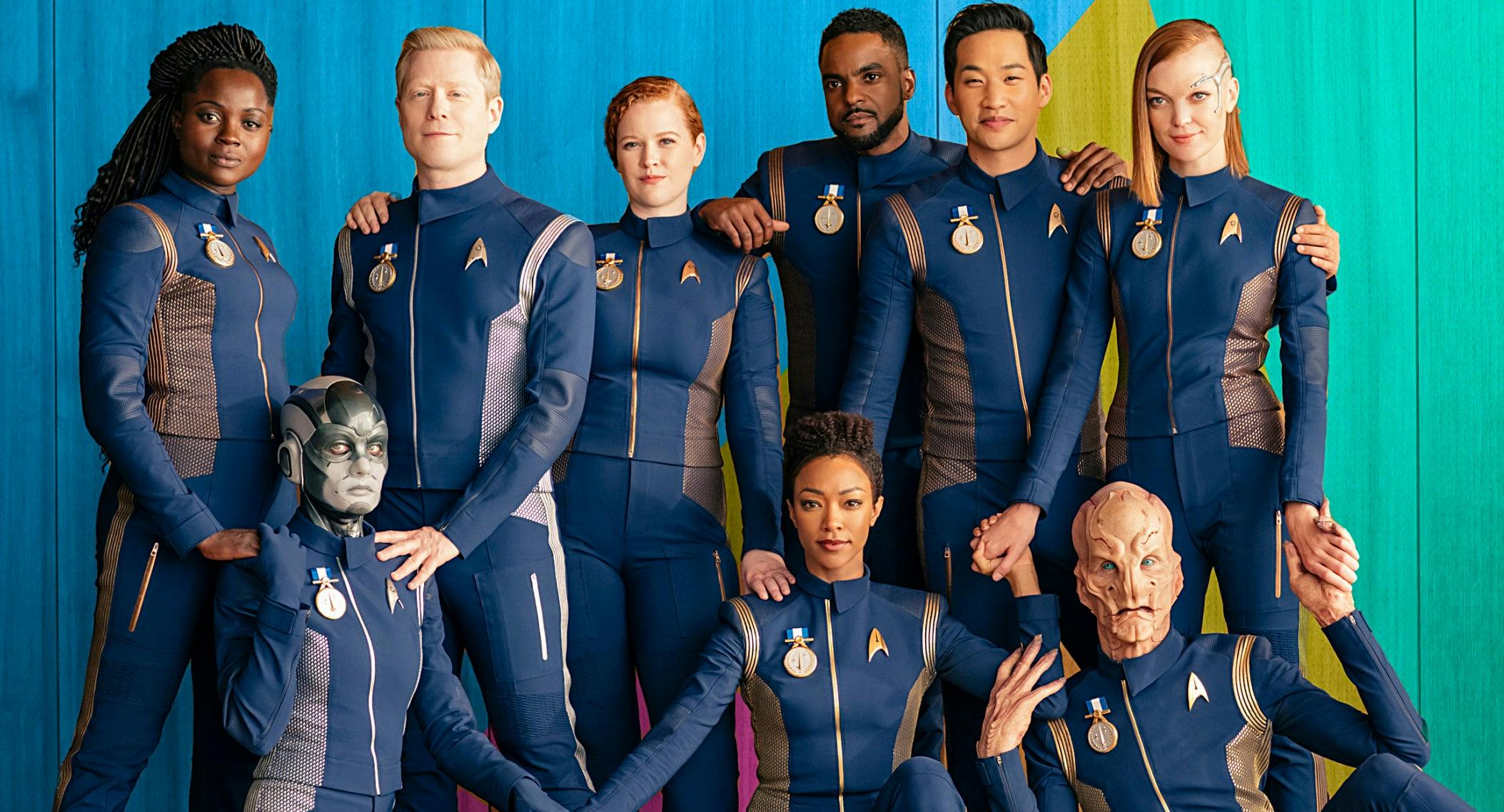
StarTrek.com
Star Trek: Discovery brought the Star Trek franchise back to television for the first time in nearly two decades. The series has used its prequel status to its advantage, mining previous shows and movies for stories, background, and countless Easter eggs. While Discovery stands beautifully on its own, it’s a rewarding and joyful experience to watch the series with the full Trek context for the myriad characters and references that connect to a 50-year-old legacy of continuity. But if you’re a fan of Discovery new to Star Trek (welcome!), trying to tackle the 700+ hours of Trek content available just to ensure a more holistic viewing experience is an order as tall as Saru.
So, in an effort to make the transition from Discovery fan to broader Star Trek fan a little less daunting, we’ve composed a list of 20 episodes picked from the previous series that are must-watches for someone looking to deepen their experience. Each of the episodes on this list directly ties into Discovery by introducing characters, races, organizations, or conceits that figure prominently into the first two seasons of the show. Hopefully after watching, the connective tissue that roots Discovery in the greater Star Trek franchise will become illuminated and you’ll be able to enjoy the series on a new level.
But be forewarned – if you like Star Trek, watching the episodes on this list might induce you to go down the rabbit hole for one or all of the previous series. That’s a very healthy choice, but we would advise you to clear your social calendar before embarking on that particular final frontier.
“The Cage” and/or “The Menagerie, Pts. I & II” The Original Series
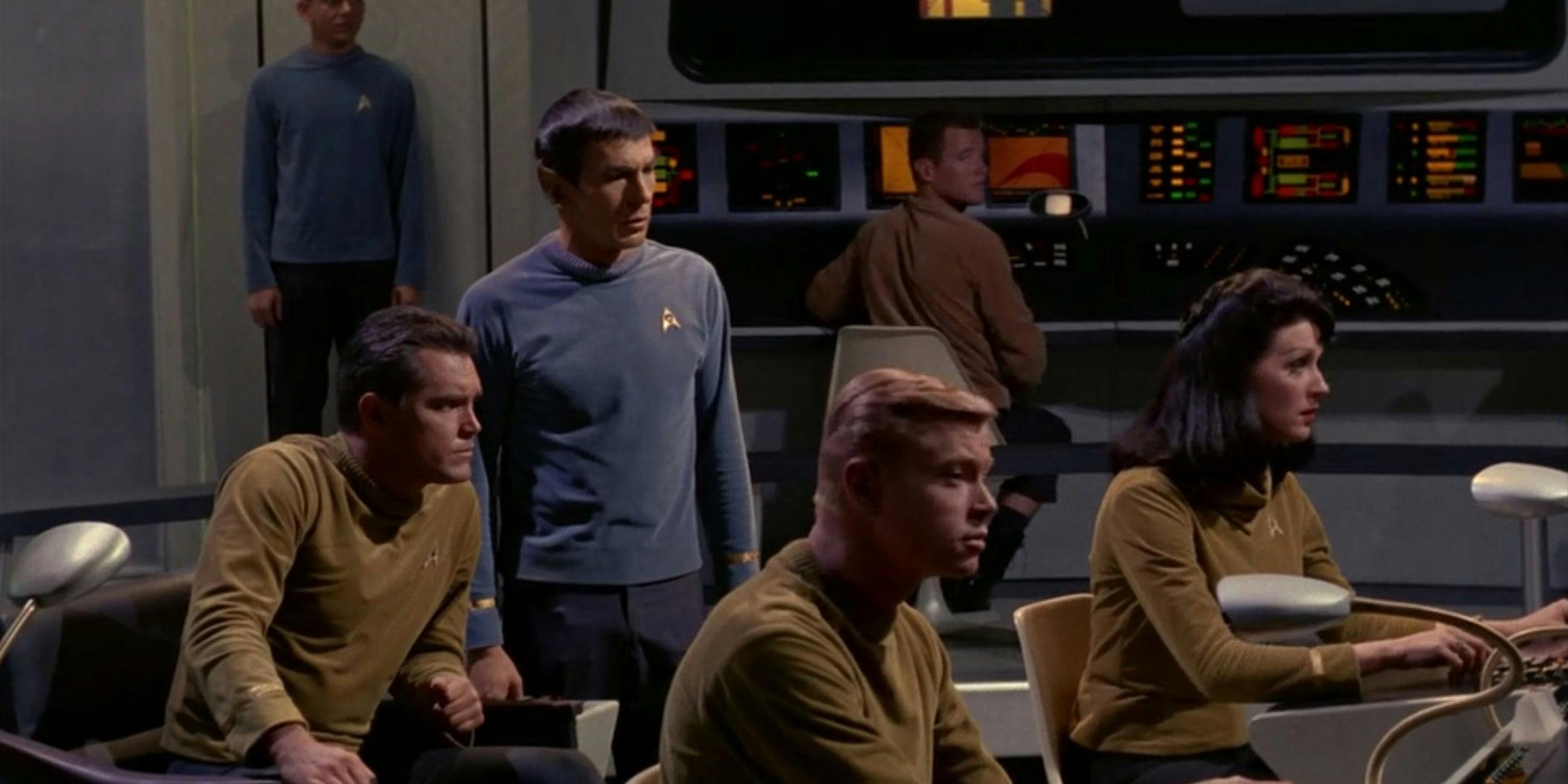
StarTrek.com
These episodes introduce Captain Christopher Pike, who serves (as Anson Mount) as acting captain of the U.S.S. Discovery during season 2. They provide invaluable context and backstory for Mount’s performance not to mention Pike and Spock’s subplot on Discovery, and also hold a pretty historic place in the Star Trek canon as a whole.
“The Cage” was the first episode of Star Trek ever produced, and served as the original pilot submitted to NBC by creator Gene Roddenberry. The cast included Jeffrey Hunter and Majel Barrett as Christopher Pike and Number One and, of course, Leonard Nimoy as Spock, and the episode also introduced the Talosians and Vina, who would reappear in season 2 of Discovery. However, NBC famously found the show too cerebral and that, among other objections, contributed to the show getting retooled to The Original Series led by the significantly more (cow)boyish James T. Kirk.
But Roddenberry would eventually fold “The Cage” into canon by including its footage in “The Menagerie,” a two-part episode in season one that featured Spock breaking martial law to help his former commander return to Talos IV ten years after the events of the original pilot. The events of “The Cage” were presented via flashback, more or less, as Spock narrated his actions to a Starfleet tribunal. That’s why we suggest an and/or choice with these two episodes – you’re certainly welcome to post up and watch “The Cage” and follow it with “The Menagerie,” but it might be unnecessarily repetitive.
“Mudd’s Women” and “I, Mudd” The Original Series
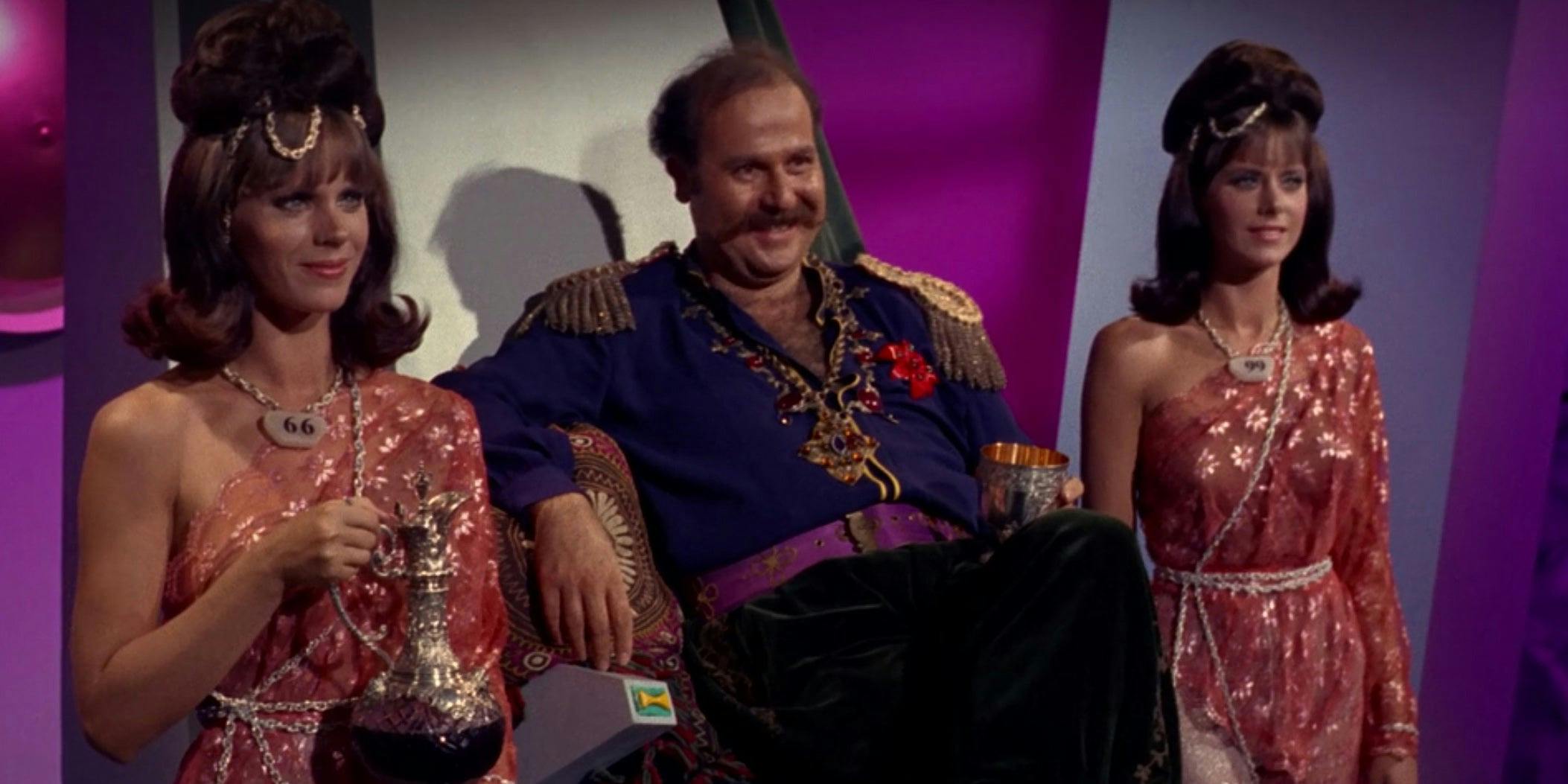
StarTrek.com
Rainn Wilson joined the cast of Discovery early on, playing the hotly-anticipated revival of TOS villain Harcourt Fenton Mudd. Despite taking place a decade before the events of TOS, Wilson’s interpretation of the highly unscrupulous “entrepreneur” beautifully echoed Roger C. Carmel’s original performance, and seasoned it with some real darkness. But Wilson’s Mudd can only be truly appreciated after watching “Mudd’s Women” and “I, Mudd,” the character’s two live-action appearances prior to Discovery’s first season.
Both episodes feature Mudd engaging in harebrained schemes that eventually blow up in his face, much to the Enterprise crew's frustration and our entertainment. But more importantly, they also introduce Stella, Mudd’s long-suffering wife. Discovery features a newlywed version of her briefly at the end of season 1’s “Magic to Make the Sanest Man Go Mad,” and it is intensely satisfying to see her at the beginning of her marriage knowing the kind of harridan Mudd will turn her into as the lore progresses.
“Mirror, Mirror” and “In a Mirror Darkly I & II” – The Original Series and Enterprise
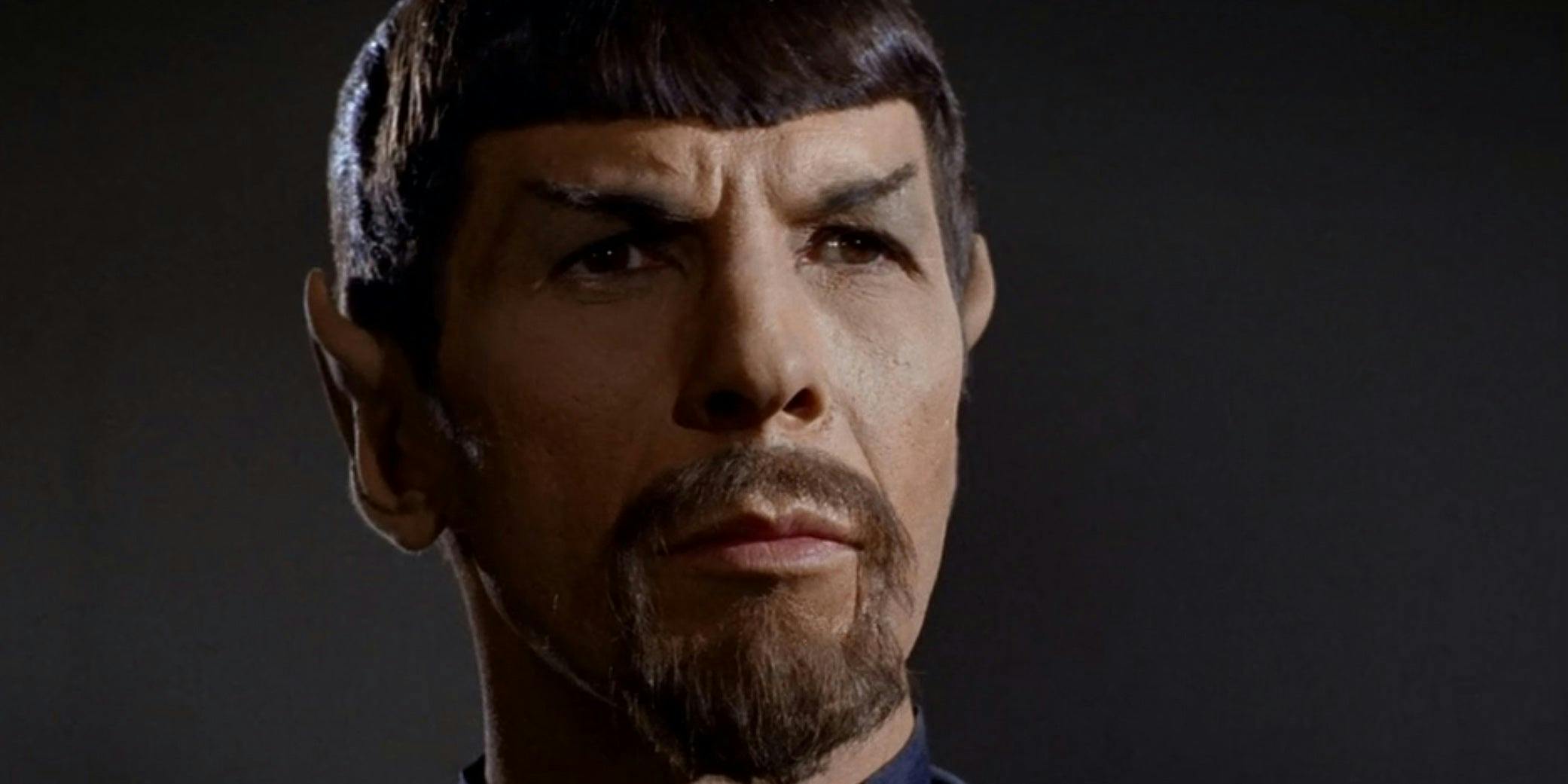
StarTrek.com
These episodes take place almost exclusively in the Mirror Universe, one of Star Trek’s most enduring and popular conceits, and one that played a crucial role in Discovery’s first season. “Mirror, Mirror”’s premise is genius in its simplicity – Kirk, Uhura and McCoy get sent to alternate reality in which humanity evolved to embrace its worst impulses (violence, racism, slavery, lots of murder), and became space-faring conquerors instead of explorers. Every character on the Enterprise has a Mirror Universe double, and when people get switched with their counterparts due to a transporter accident, chaos ensues. (And by chaos, we mean Spock’s goatee.)
The Original Series never returned to the concept and Deep Space Nine featured a handful of Mirror Universe episodes, but Enterprise’s fourth season two-parter earned a place on this list because, without spoiling the end of the episodes, its conclusion directly ties in with Discovery’s encounter with the Mirror Universe in season one. Still, while you might come for the context, you’ll stay for very special opening credits sequence Enterprise produced just for this two-parter.
“Journey to Babel” and “Once Upon a Planet” – The Original Series and The Animated Series
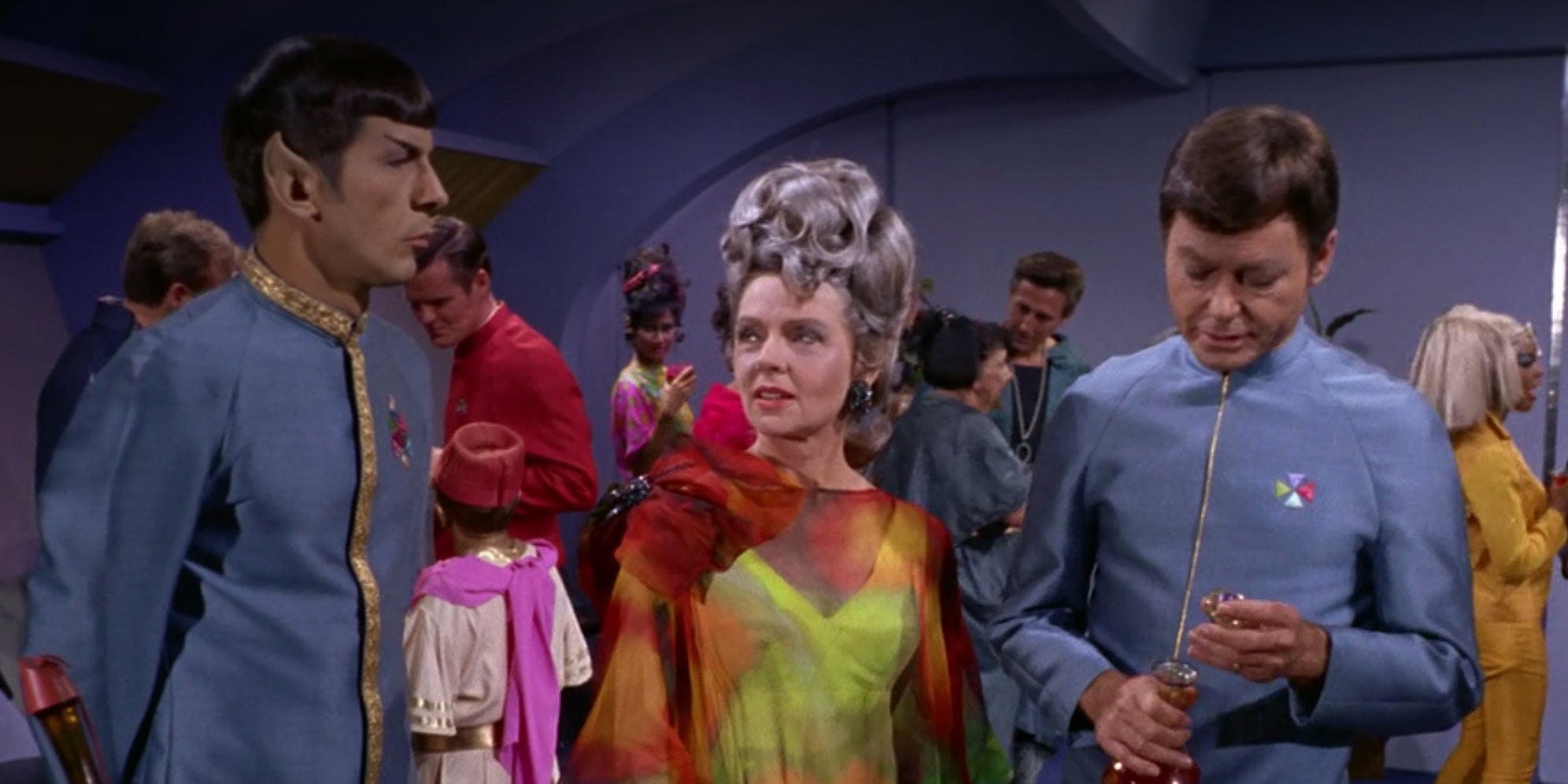
StarTrek.com
The idea of picking one episode or even ten to give context to Spock — one of Star Trek’s most influential characters — is entirely self-defeating, but these two provide excellent backstory for Spock’s family as we see it represented on Discovery. “Journey to Babel” introduces Sarek and Amanda when they happen to visit the Enterprise for a diplomatic function and run into their estranged son. All three characters and the dysfunctional family dynamics featured in this episode come into play heavily during Discovery’s first two seasons.
“Once Upon a Planet” is a whimsical episode of the short-lived Star Trek: The Animated Series that features the crew visiting an amusement park planet whose controlling computer has gone bonkers in its quest to escape servitude. Instead of creating illusory enjoyments for those who visit, it starts creating dinosaurs, deadly animals and characters from Alice in Wonderland, all bent on attacking the crew so the computer can eventually take over the Enterprise for itself. It’s a Mr. Toad’s Wild Ride of an episode for sure, but it also marks the first and only time Spock mentioned his mother reading Alice in Wonderland to him. That last fact plays heavily into Discovery’s first season, and “Once Upon a Planet” grounds Michael Burnham as a member of Spock’s family, despite her being added to it comparatively late in the game.
“Sarek” The Next Generation
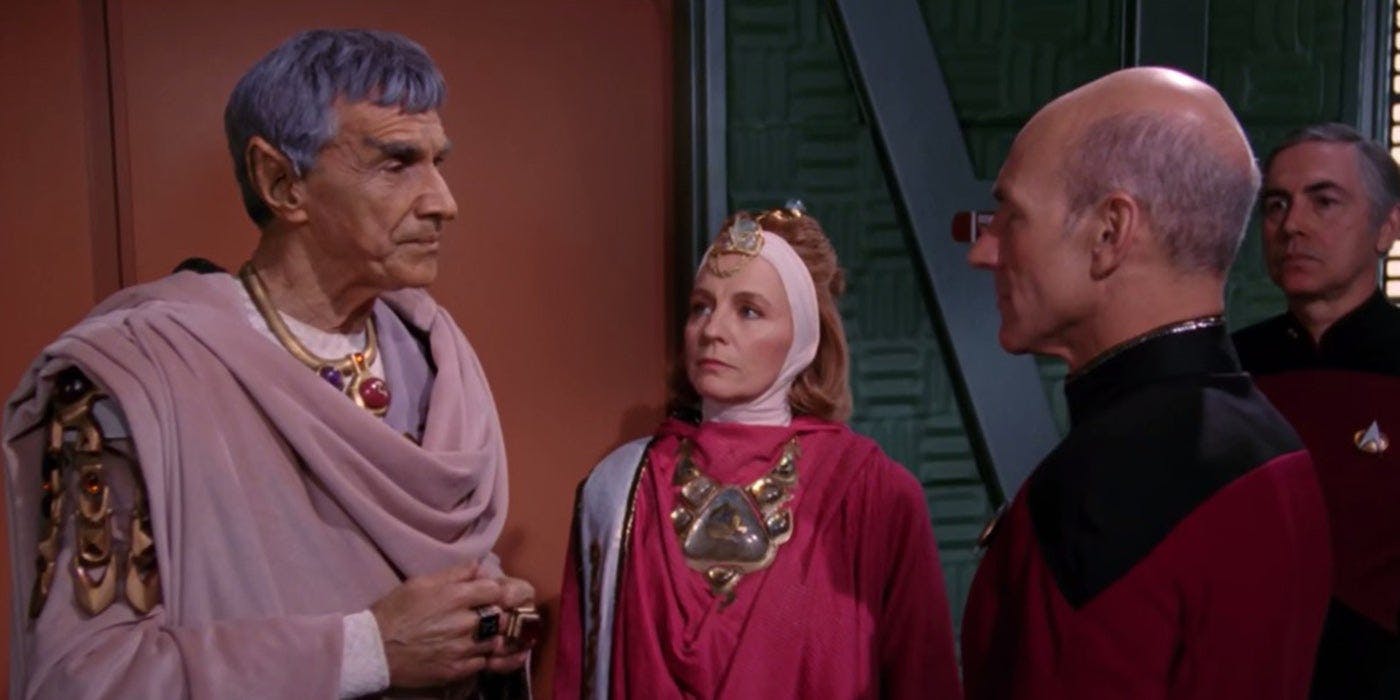
StarTrek.com
While Sarek appears in The Original Series and four of the TOS films, his eponymous episode in Star Trek: The Next Generation serves as the best and most concise introduction to the character as we know him on Discovery. “Sarek” features him toward the end of his life and diplomatic career, neatly encapsulating his personality, accomplishments and struggles in one beautiful episode.
As Michael Burnham’s foster father, Sarek plays a crucial role in seasons 1 and 2 of Discovery, and his influence contributes greatly to Burnham’s choices and development. “Sarek” is uniquely well-suited to introduce non-Trek viewers to his role in Discovery because it focuses less on his fraught relationship with Spock, which doesn’t come into play heavily on Discovery at all.
"Sins of the Father," "Reunion," “Redemption Pts. I & II” The Next Generation
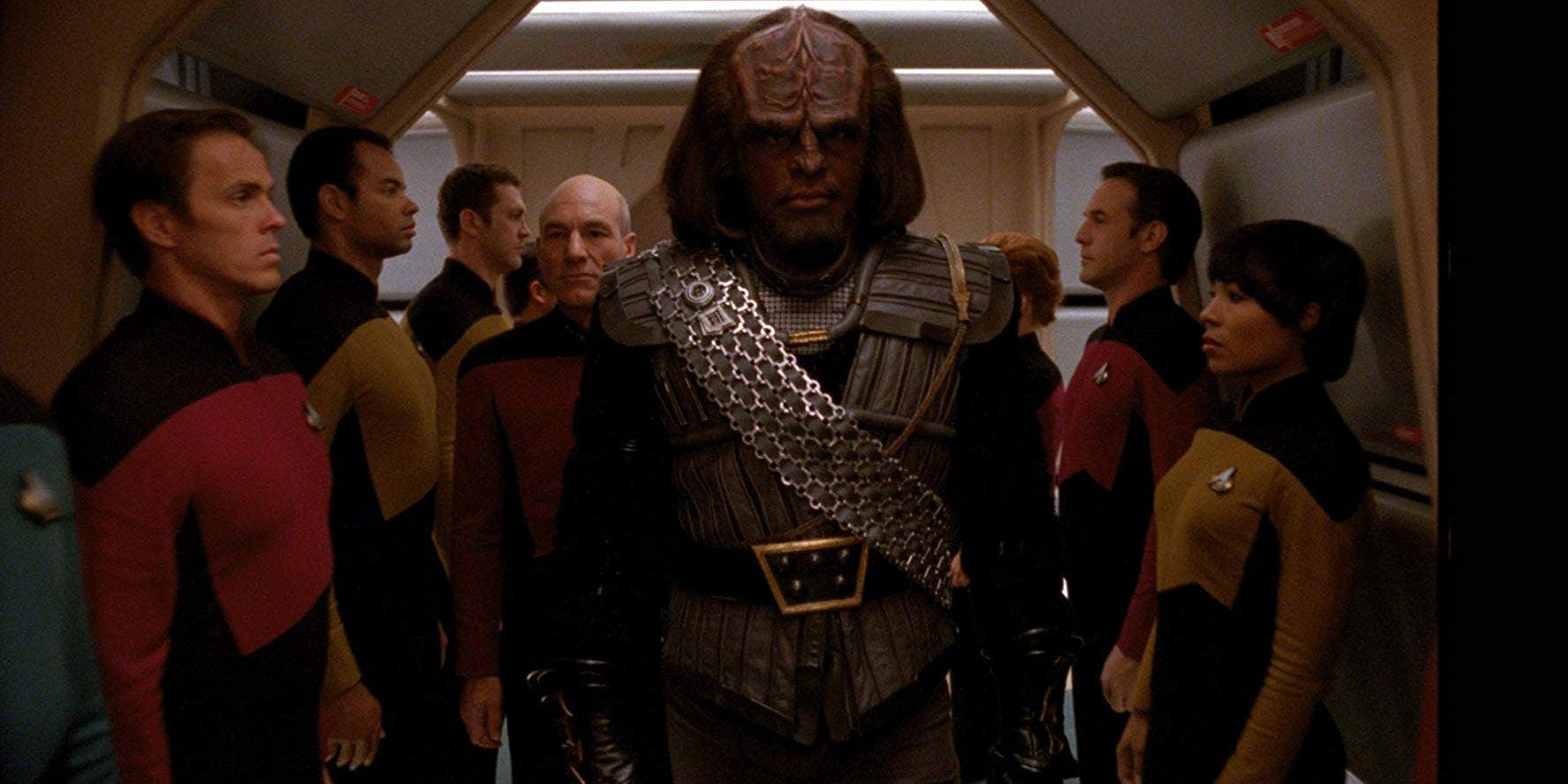
StarTrek.com
If you haven’t watched Star Trek, then you haven’t met Klingons. The first season of Discovery might feel somewhat inaccessible without any context for one of Trek’s most heavily-explored alien races. To wit, it’s hard to sum them up in just a few episodes, but these three episodes of TNG provide an extremely good look at Klingon culture and government, both of which drove the story in Discovery’s first season and part of the second.
The four episodes take place over the third and fourth seasons of TNG and follow Worf as he and his family become embroiled in a Klingon political power struggle. The arc showcases many aspects of Klingon culture, most notably in how their concept of honor is often manipulated for political gain. That inherent corruption drives much of Voq and L’Rell’s storylines in the first two seasons, and this series of episodes provides valuable insight into the society that produced two of Discovery’s main characters.
“Inquisition," "Inter Arma Enim Silent Leges," "Extreme Measures" - Deep Space Nine; "Terra Prime" - Enterprise
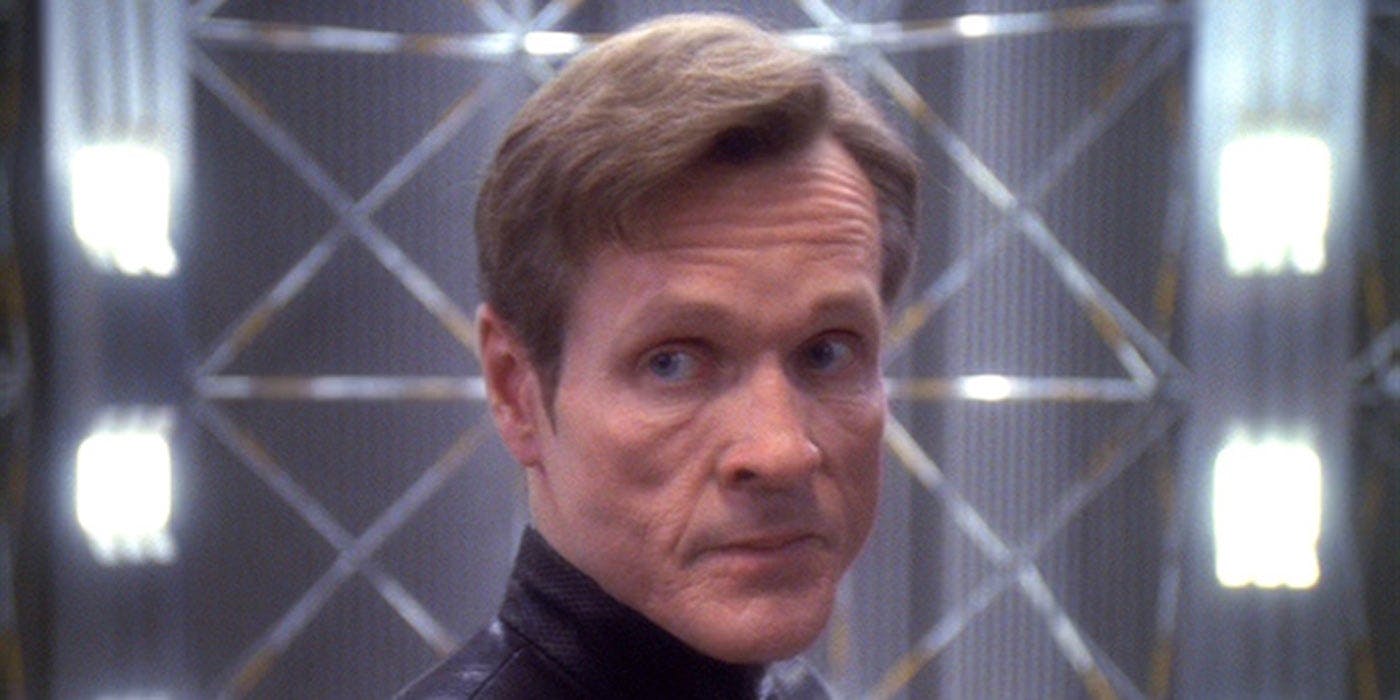
StarTrek.com
Section 31 is Starfleet’s black-ops intelligence agency – think the CIA, but with virtually no oversight – and they factor heavily into Discovery’s second season. These episodes of Deep Space Nine and Enterprise neatly outline the agency’s structure, origins and its nature as one of the more corruptible elements of the Federation’s pristine image. Ira Steven Behr created the agency for Deep Space Nine, and it would later be resurrected on the prequel series Enterprise. These two arcs bookend the agency’s existence which gives its treatment on Discovery necessary context. On Deep Space Nine, the agency is completely off the books, and only Starfleet Command is even aware of its existence. Dr. Julian Bashir is more or less pressed into their service after showing an aptitude for espionage, and his journey with the agency plays a crucial role in the series’ final conflict between the Dominion and the Federation. On Enterprise, Section 31 occupies a similar place in Starfleet’s consciousness, but it’s in its nascency on that series and behaves with a bit more nobility. This group of episodes showcases the different stages of evolution Section 31 has undergone and makes its presence on Discovery part of a much longer, more compelling story.
"Prophecy” Voyager
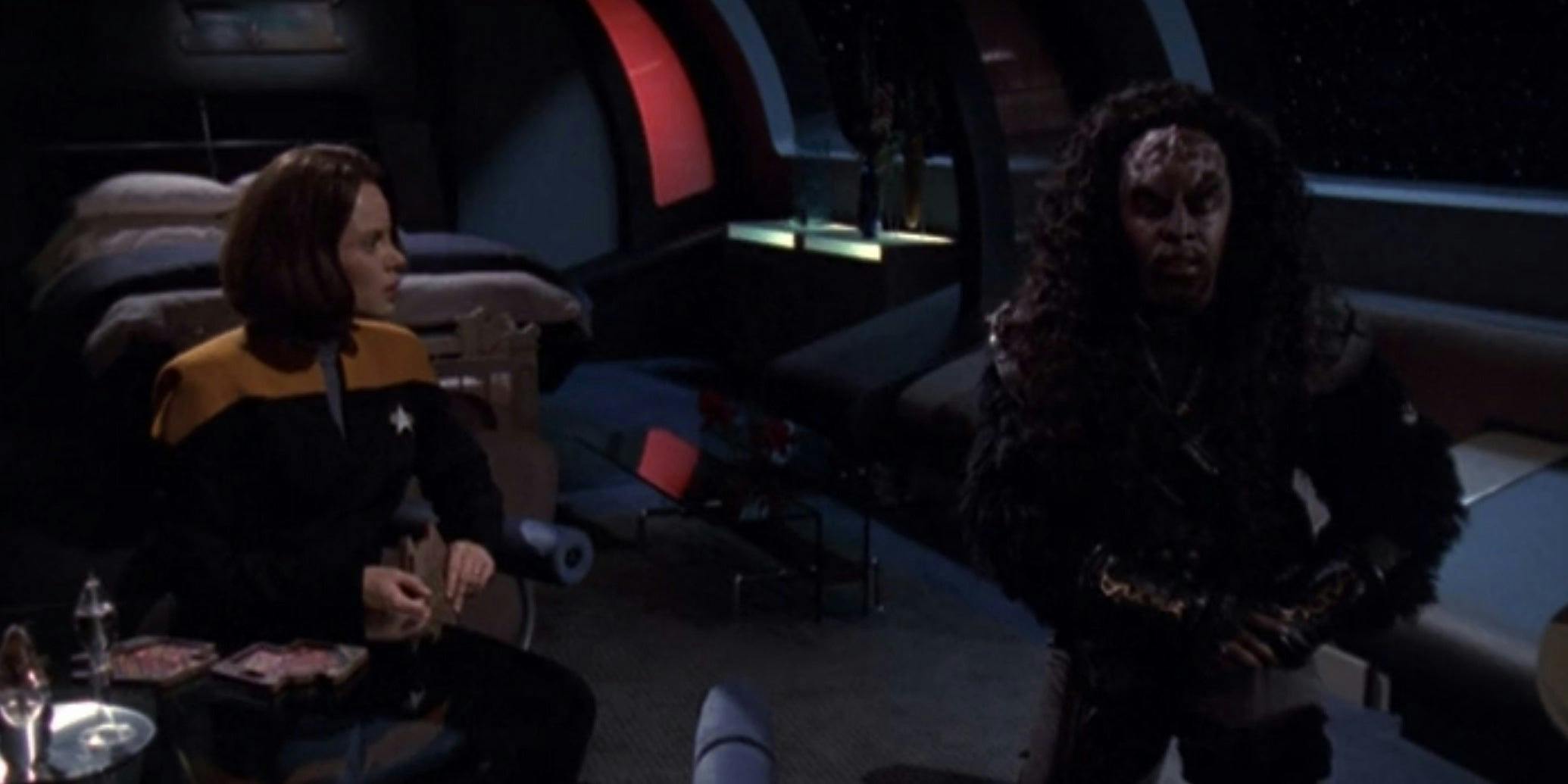
StarTrek.com
This episode of Star Trek: Voyager features a Klingon religious cult that closely resembles the group of Klingons who kick off Discovery’s first season. In “Prophecy,” Voyager encounters religious pilgrims in search of the “kuvah'magh,” a prophesied Klingon savior thought to be a messiah. They realize upon meeting the pregnant B’Elanna Torres that her unborn child fits the bill. Interestingly, they’re able to meet up with Voyager in the Delta Quadrant because they embarked on their search in the mid-23rd century, which is exactly when Discovery takes place. And while the connection between the two shows is not overt, Voyager’s Klingons could be related to T’Kuvma and his followers in Discovery’s pilot. “The Vulcan Hello” begins with a ceremony led by a messianic Klingon traditionalist who believed himself to the be second coming of Kahless, a prominent Klingon religious figure. It’s possible the Klingons featured in “Prophecy” are remnants of T’Kuvma’s followers, and more broadly this episode of Voyager lasers in on aspects of Klingon religion that feature prominently on Discovery. An understanding of religious extremism as it manifests in Klingon culture lends a lot to a first-watch of Discovery, and “Prophecy” is an excellent example.
Alexandra August (she/her) is a journalist and podcaster in the Los Angeles area. She freelances for multiple outlets and co-hosts The DiscoTrek: A Star Trek Discovery podcast. Tweet her @alxaugust.
Star Trek: Discovery streams exclusively on CBS All Access in the United States and is distributed concurrently by CBS Studios International on Netflix in 188 countries and in Canada on Bell Media’s Space Channel and OTT service Crave.

